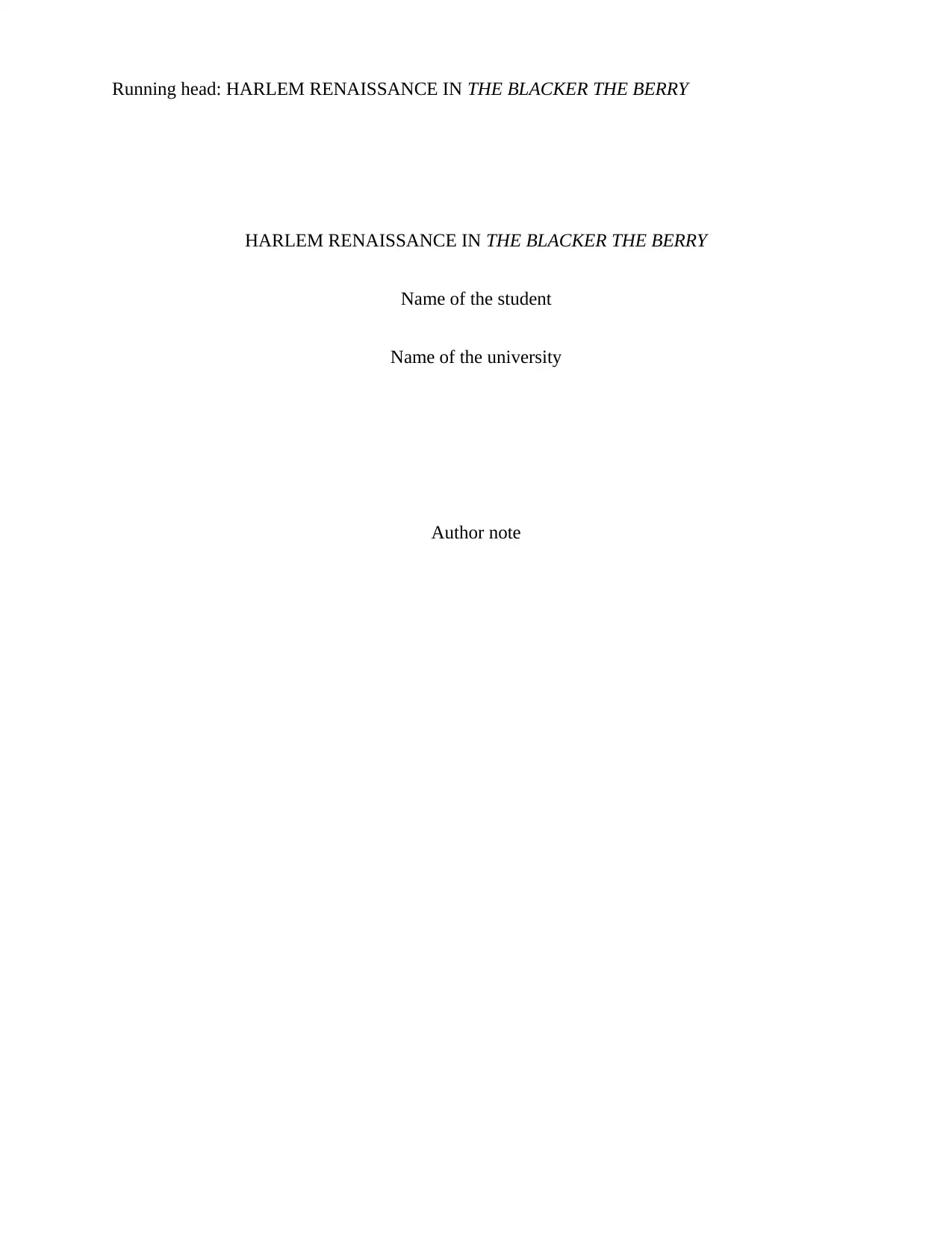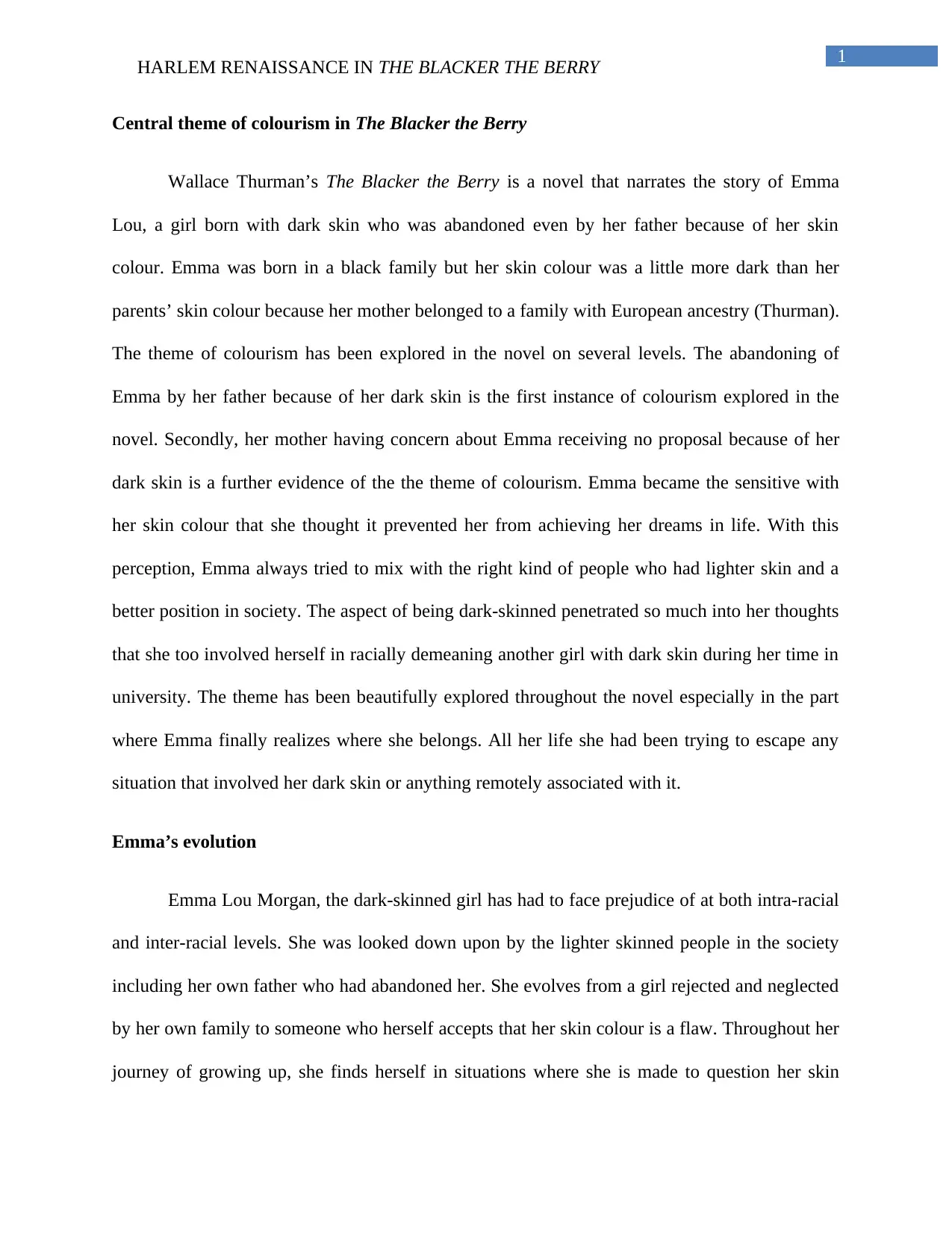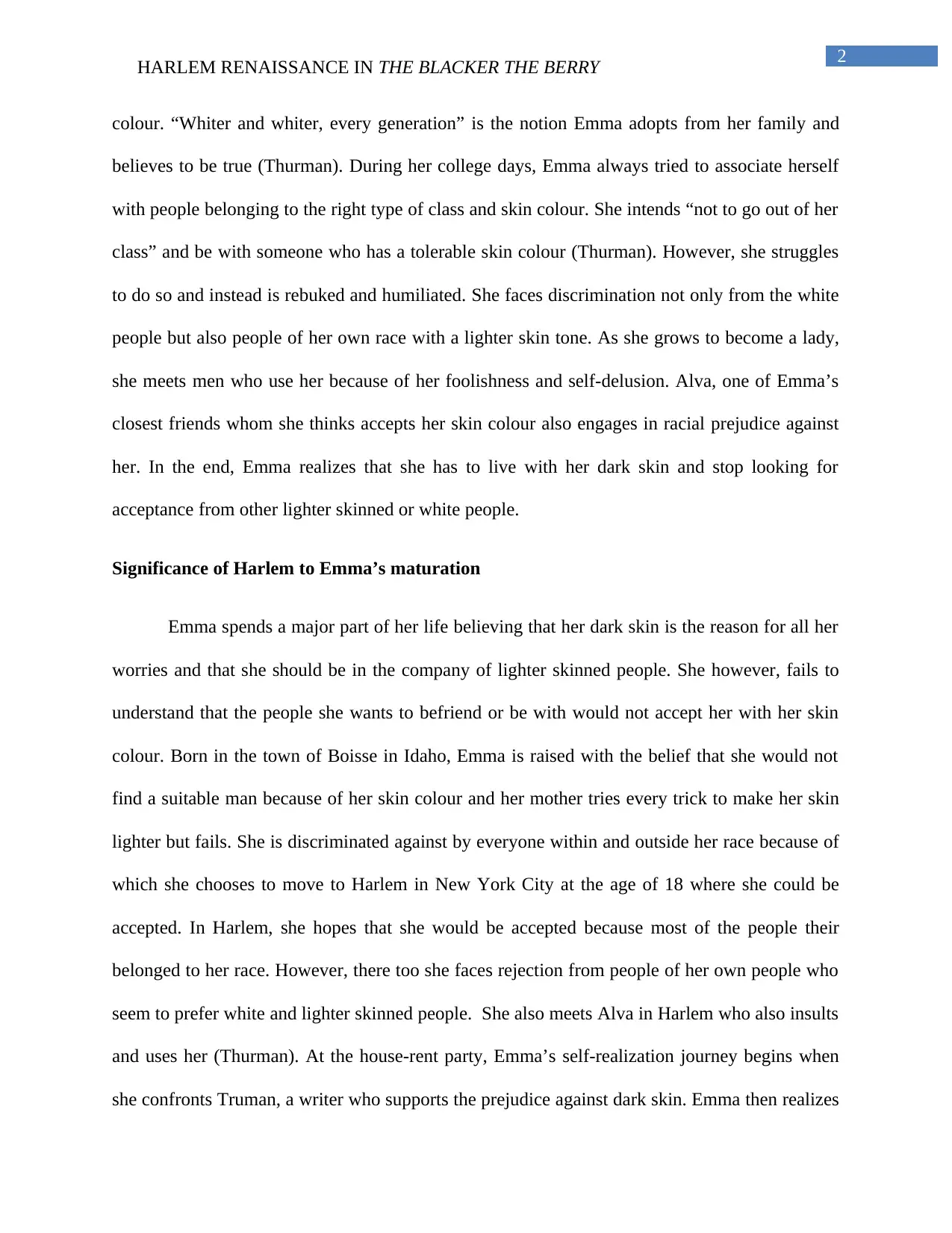The Blacker the Berry: A Study of Harlem Renaissance and Colorism
VerifiedAdded on 2022/11/18
|5
|886
|103
Essay
AI Summary
This essay provides an analysis of Wallace Thurman's novel, The Blacker the Berry, focusing on the central theme of colorism within the context of the Harlem Renaissance. The essay explores the experiences of Emma Lou Morgan, a dark-skinned woman who faces prejudice from both within and outside her race, highlighting the intra-racial and inter-racial discrimination she encounters. It examines Emma's evolution from a young woman seeking acceptance to a self-aware individual who comes to terms with her skin color. The essay further discusses the significance of Harlem in Emma's journey of self-discovery, illustrating how her experiences in Harlem ultimately lead to her self-realization and acceptance. The essay references the novel's exploration of societal prejudices and the impact of colorism on individual identity during the Harlem Renaissance, culminating in Emma's understanding of where she belongs.
1 out of 5








![[object Object]](/_next/static/media/star-bottom.7253800d.svg)